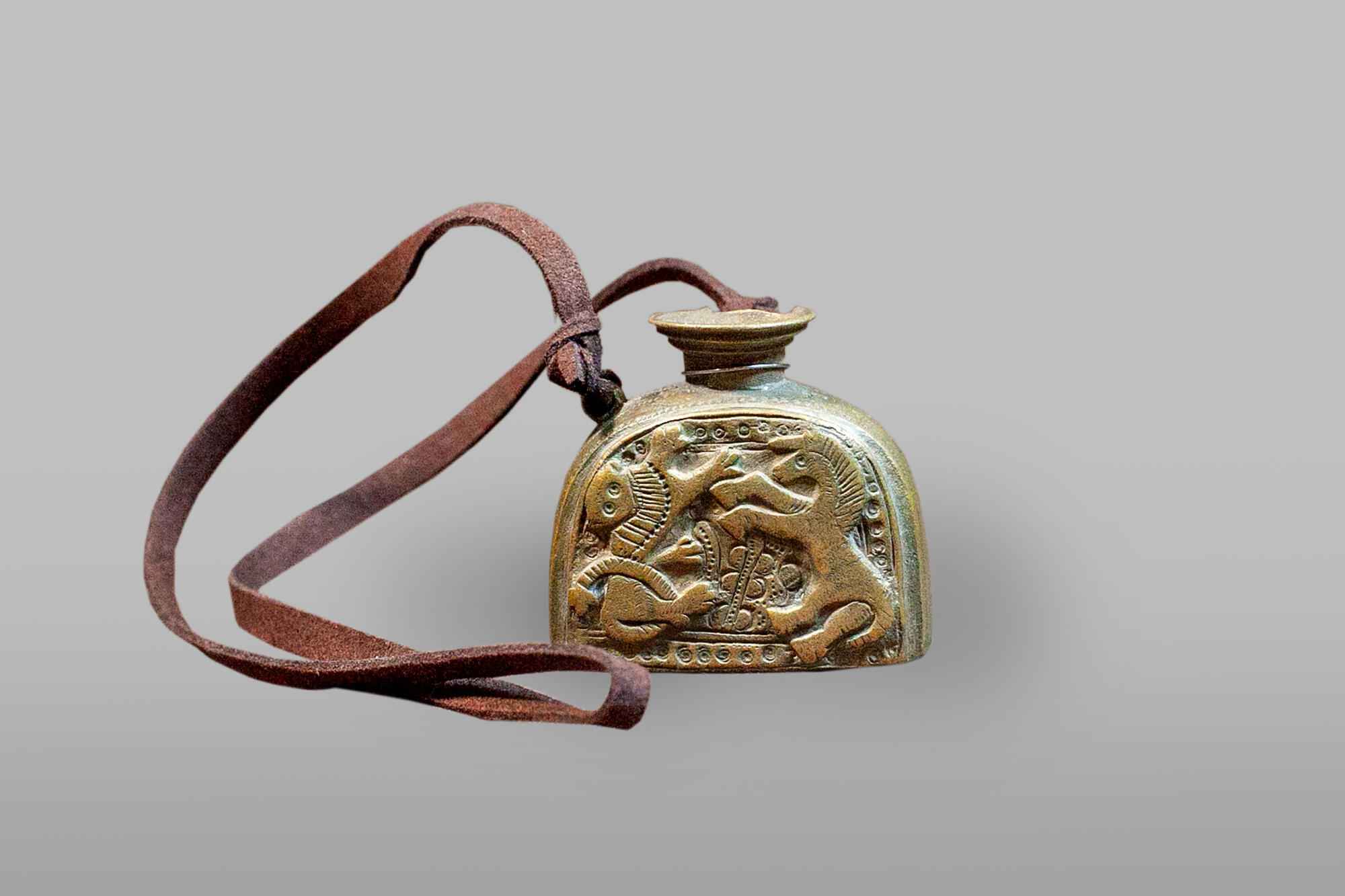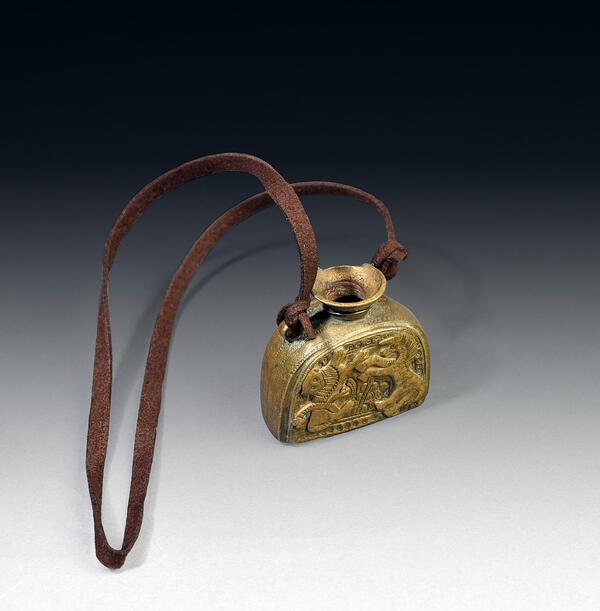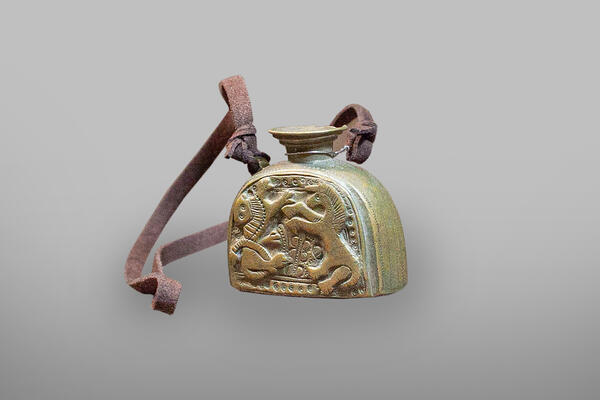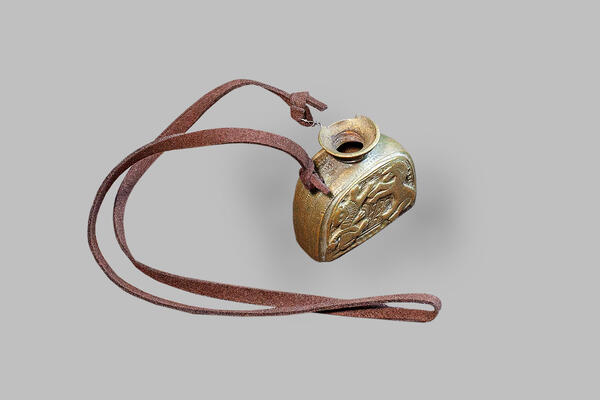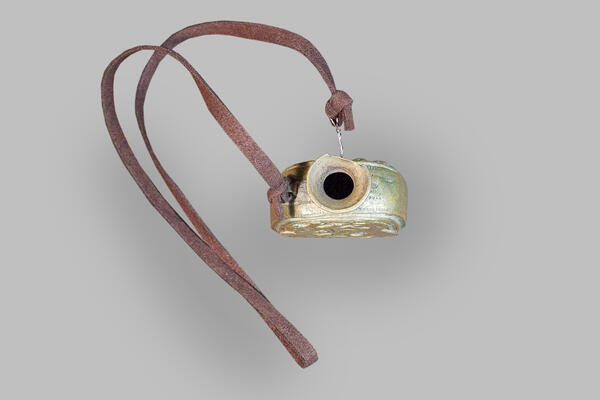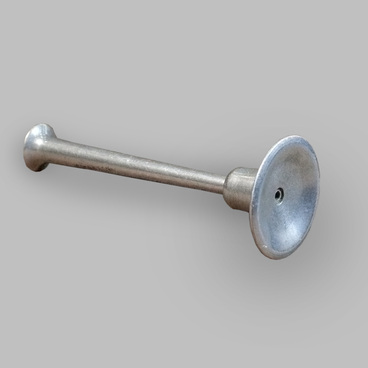One of the oldest and most interesting exhibits in the Diorama exhibition is a 17th-century portable bronze inkwell — a small container for holding liquid ink used when writing with a fountain pen. The bronze inkwell is made in the form of an arc-shaped bottle with two eyelets for hanging.
The inkwell features a three-dimensional image depicting a mythical plot — a battle or a dance between a lion (griffin) and a horse (unicorn). The griffin — half lion, half eagle —symbolizes speed and strength. In antiquity, griffins were known for guarding treasures. The unicorn symbolizes purity and grace. This legendary creature was mentioned in the works of Christian writers as a symbol of the Annunciation and the Incarnation. The unicorn looks like a horse with a horn.
Laces were tied to the two eyelets of the inkwell. This method of fastening the laces prevented the inkwell from turning over. The device was convenient in everyday life because it could be attached to the belt and was stable: it could be placed on any surface or simply held in the palm of the hand.
Such inkwells were used when working on handwritten books, which required a lot of diligence and concentration. As a rule, the books were copied by monks. Scribes became fond of each rewritten book giving it a part of their soul. One can only imagine what joy and relief the scribe had after finishing their work. They mentioned such moments in their diaries with prayers and joy.
The Kirov Regional Museum of Local Lore houses unique chronicle records that were written in Vyatka in the 17th and 18th centuries and are known in Kirov and beyond. These include “The Vyatka Annals”, “The Tale of the Vyatka Land”, “The Tale of the Appearance of the Miraculous Image of Our Father Nikolay Velikoretsky”, “The Chronicler of the Old Years”, as well as “The Life, Feats, and Miracles of Our Reverend Father Archimandrite Tryphon of Vyatka, the Miracle Worker and Head of the Monastery of the Assumption of the Mother of God in Khlynov”.
The inkwell features a three-dimensional image depicting a mythical plot — a battle or a dance between a lion (griffin) and a horse (unicorn). The griffin — half lion, half eagle —symbolizes speed and strength. In antiquity, griffins were known for guarding treasures. The unicorn symbolizes purity and grace. This legendary creature was mentioned in the works of Christian writers as a symbol of the Annunciation and the Incarnation. The unicorn looks like a horse with a horn.
Laces were tied to the two eyelets of the inkwell. This method of fastening the laces prevented the inkwell from turning over. The device was convenient in everyday life because it could be attached to the belt and was stable: it could be placed on any surface or simply held in the palm of the hand.
Such inkwells were used when working on handwritten books, which required a lot of diligence and concentration. As a rule, the books were copied by monks. Scribes became fond of each rewritten book giving it a part of their soul. One can only imagine what joy and relief the scribe had after finishing their work. They mentioned such moments in their diaries with prayers and joy.
The Kirov Regional Museum of Local Lore houses unique chronicle records that were written in Vyatka in the 17th and 18th centuries and are known in Kirov and beyond. These include “The Vyatka Annals”, “The Tale of the Vyatka Land”, “The Tale of the Appearance of the Miraculous Image of Our Father Nikolay Velikoretsky”, “The Chronicler of the Old Years”, as well as “The Life, Feats, and Miracles of Our Reverend Father Archimandrite Tryphon of Vyatka, the Miracle Worker and Head of the Monastery of the Assumption of the Mother of God in Khlynov”.
